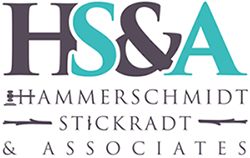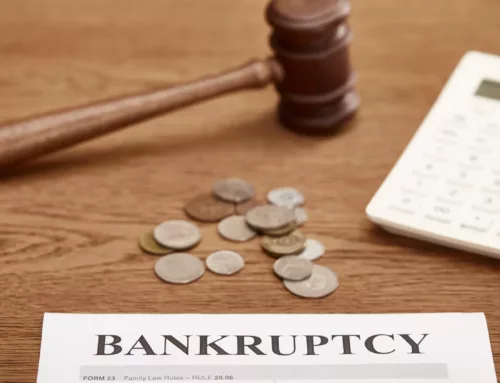Unraveling the Relationship Between Student Loans and Bankruptcy
Money troubles can make people look for ways to ease their debt. In Royal Oak, Michigan, one crucial thing to ponder is how student loans and bankruptcy connect. Since student loan debt is a big financial problem for many, knowing how bankruptcy might affect it is crucial. This post will explain the details of student loan bankruptcy in Royal Oak, MI.
It gives information on what you can do, what you can’t, and other options if you’re struggling with too much student loan debt. Whether you want to know about Chapter 7 or Chapter 13 bankruptcy and how they relate to student loans, this guide helps you understand the situation in Michigan’s legal system.
Short Summary:
- Bankruptcy is a legal process providing a structured approach to manage and sometimes eliminate debts, offering a fresh start to individuals and businesses.
- Chapter 7 involves liquidation, selling non-exempt assets to pay off creditors.
- Chapter 13 entails creating a repayment plan over three to five years, allowing individuals to retain assets.
- Student loans assist individuals in covering higher education costs and are offered by government agencies (federal) or private lenders.
- Erasing student loans through bankruptcy is usually challenging due to strict rules against canceling educational debt.
- Undue hardship exceptions allow the potential discharge of student loans by proving extreme financial difficulty.
- Criteria, such as the Brunner Test, assess the inability to maintain a basic standard of living, persistent financial hardship, and good faith efforts to repay loans.
- Different regions may consider the totality of circumstances, leading to jurisdictional variations in handling student loan discharge cases.
- Student loans must be repaid if hardship is not proven in Chapter 7 bankruptcy. Meanwhile, Chapter 13 offers alternatives, including debt elimination or a payment plan based on income, stopping creditor calls and threats.
What is Bankruptcy?
Bankruptcy is a legal process that provides individuals and businesses facing financial difficulties with a structured approach to managing and, in some cases, eliminating their debts. The primary purpose of bankruptcy is to offer a fresh start to individuals and entities overwhelmed by debt, allowing them to reorganize their finances or, in certain instances, discharge certain debts.
Types of Bankruptcy
There are different types of bankruptcy, with the two most common chapters being Chapter 7 and Chapter 13 in the United States.
Chapter 7 Bankruptcy
- Often referred to as liquidation bankruptcy
- Involves the sale of non-exempt assets to pay off creditors
- Some debts may be discharged, providing a clean slate for the individual or business.
Chapter 13 Bankruptcy
- Also known as reorganization bankruptcy or wage earner’s plan
- Involves creating a repayment plan to pay off debts over a specified period, usually three to five years
- Allows individuals to keep their assets while gradually settling their debts
Bankruptcy proceedings are initiated through a legal filing, and the process is overseen by a bankruptcy court. The specific rules and procedures may vary depending on the country and jurisdiction. Understanding the implications of bankruptcy is essential, including which debts may be dischargeable and the potential impact on one’s financial situation.
What are Student Loans?
Student loans are financial assistance provided to individuals to help them cover higher education costs, including tuition, fees, books, and living expenses. These loans are designed specifically to support students pursuing post-secondary education, such as attending college or vocational school.
Student loans are commonly offered by government agencies, such as the U.S. Department of Education, for federal student loans or private financial institutions for private student loans.
Types of Student Loans
Below are the two types of student loans. Here are the following:
- Federal Student Loans – These loans are funded by the federal government and include various programs, such as Direct Subsidized and Unsubsidized Loans, PLUS Loans, and Perkins Loans. These loans from the government usually offer more flexible ways to pay them back.
- Private Student Loans – Offered by private lenders, these loans are not backed by the government and often have different terms and conditions than federal loans.
Do Student Loans Easily Discharge in Bankruptcy?
It is usually hard to erase student loans with bankruptcy. The law has strong rules against canceling educational debt, so exploring different avenues for assistance is crucial. That sets the groundwork for understanding student loans and bankruptcy, helping people in Royal Oak, MU, prepare for the difficulties they might encounter when considering these financial strategies.
What are the Exceptions to Discharging Student Loans in Bankruptcy?
In all the tests, the main point is proving that you don’t earn enough money to repay your student loans.
Undue Hardship Exception
The “undue hardship” exception goes against the usual rule. To qualify, borrowers need to show extreme financial difficulty, which might allow them to get rid of their loans.
Here are the criteria:
- Brunner Test: This is the main way to prove undue hardship. It checks if the borrower cannot maintain a basic standard of living, experiences ongoing financial hardship, and genuinely tries to repay the loans.
- Inability to Maintain Basic Standard of Living: The person borrowing the money can’t keep up with the basic way of life while repaying the loans.
- Persistence of Financial Hardship: The money troubles are expected to stick around for a long time, even throughout the repayment period.
- Good Faith Efforts: The borrower has truly tried to repay the loans in good faith.
- Different Rules in Various Areas
- Totality of Circumstances: In some places, they look at everything going on, not just the Brunner test. They check a bunch of different things to make decisions.
- Jurisdictional Variations: The rules for proving undue hardship can differ depending on your location. That leads to variations in how bankruptcy courts in different regions handle cases where people want to get rid of their student loans.
What if I Cannot Remove My Student Loans with Bankruptcy?
If you cannot prove that repaying your student loans would be too challenging in Chapter 7, you still have to pay them after your bankruptcy ends. But in Chapter 13 bankruptcy, things can be different.
If you’re struggling with bills like medical expenses or credit card debt, you can either get rid of these debts or set up a payment plan based on your income. Even though you’ll still be responsible for any remaining balance after the repayment period, this process stops calls from creditors, wage garnishment, and threats of home foreclosure. In simple terms, bankruptcy helps by dealing with other debts, so you can focus more on repaying student loans.
Reach Out to our Bankruptcy Lawyers for a Student Loan Debt-Free Future in Royal Oak, MI!
If you’re struggling with student loan bankruptcy in Royal Oak, MI, our guide is here to help you figure things out. Get tips on dealing with the tricky parts of getting rid of student loans, understand what it takes to prove undue hardship, and check out other ways to get relief.
At Hammerschmidt Stickradt & Associates, we understand how tough it can be to deal with a lot of student loan debt. Our team is here to give you personal advice, carefully looking at your situation. We have plenty of experience in bankruptcy law, and we’re here to help you find the proper answers to your money problems.
Break free from the chains of student loan stress with the support of Hammerschmidt Stickradt & Associates. Our dedicated attorneys leverage their competency to advocate on your behalf, ensuring your voice is heard in the complex legal landscape of bankruptcy. Your financial well-being is our priority.
Aside from our office in Royal Oak, we also offer bankruptcy legal services in our other offices in Walled Lake and Wyandotte in Michigan.



